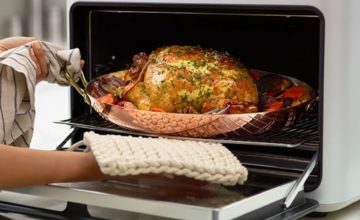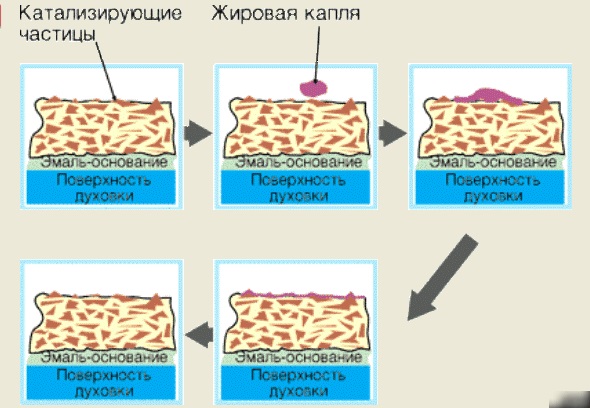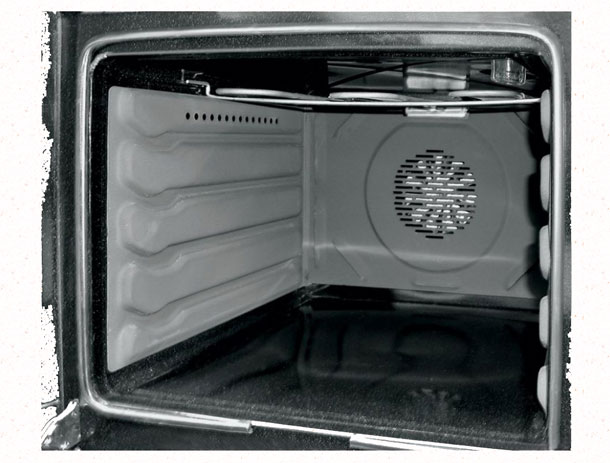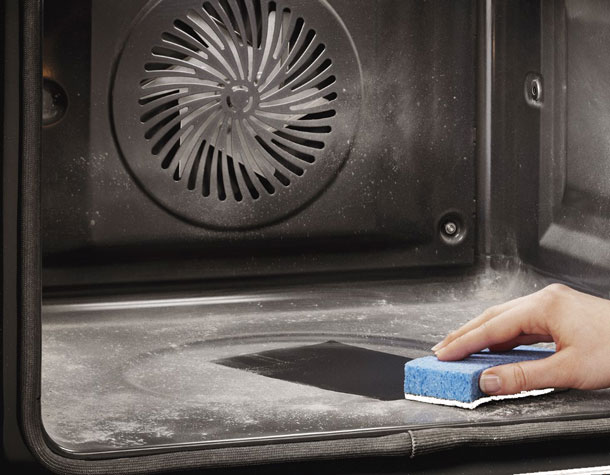Without exception, everyone in the family is happy to eat dishes cooked in the oven: an appetizing crust will not leave anyone indifferent, and the food turns out to be juicy and tasty. That's just the desire to wash the oven, no one arises. As a rule, this fate falls to the mother, who has to conjure for hours over the oven in order to bring it into its original form.

Dishes cooked in the oven often leave behind a greasy coating that is not easy to get rid of
However, when dealing with the catalytic built-in cleaning of the oven, you no longer have to rack your brains on how to quickly and efficiently wash the oven. Such a device greatly facilitates the work of housewives, eliminating pollution with the help of a special chemical reaction that begins to work even at the time of cooking.
Catalyst Cleaning Principle
Catalytic purification consists in the following: while food is being cooked in the oven, special substances decompose the evaporation of fat into molecules, which are sent to a special filter based on a sorbent. The cleaning process occurs at the time of cooking and begins its action when heated from 140 degrees. At temperatures above 200 degrees, the function works most effectively.
It is worthwhile to consider in more detail the method of catalytic cleaning of the oven in order to understand what it is and what the principle of operation is.
So, catalysis is called accelerated chemical processes. Such processes go in the oven, which is equipped with this function, at the time of cooking. The fat that is released from the heated dish is immediately converted to small carbon and water particles, which are sent to a special filter. This reaction provokes a special coating on the interior panels of the oven and on the convector.

A schematic example of the action of catalysis
Parts coated with special enamel represent a black rough surface with small pores throughout the area. In these pores are chemicals that allow catalytic purification when the oven is heated.
Contrary to misconceptions, cleaning with a catalyst is absolutely safe to use and harmless to the human body.
From the foregoing, it is already clear that you do not need to press any buttons to start the program. Catalytic cleaning starts working as soon as the oven warms up to 140 degrees. However, the best result can be achieved by heating from 200 degrees or more. After preparing dinner, just wait until the oven cools down a bit and wipe the inside with a damp sponge or rag. That's it - the stove looks like new and ready for the next culinary masterpieces.
Features of catalytic cleaning
Like any home appliance, an oven with this cleaning method has its own characteristics, which must be taken into account in order to choose a device suitable for the whole family. So, what you need to know about the catalytic treatment furnace:
- The special coating of the side panels is very sensitive to sugar and dairy products. That is why the places where the liquid flows most often - the bottom of the oven and the door are not covered with enamel, which means that you will have to clean them yourself.

The special coating is very sensitive to sugar, milk, powder-based cleaners and hard sponges.It is important to care for the panels correctly so as not to damage the enamel.
- This method is slightly inferior to pyrolysis. With excessive release of fat, the device may not be able to cope with the volume, and it will remain on the panels and disappear the next time it is cooked.
- It is not surprising that special enamel will require special care. Collecting plaque is permissible only with the soft side of the sponge or a rag. It is also highly not recommended to use detergents in the form of a powder. In other words, do not allow the use of objects or substances that could scratch a delicate surface.
- The enamel on the walls of the oven is short-lived and erases within five years of use. This means that you have to purchase new walls. Installing them is easy, but the extra spending has not pleased anyone. Some models provide this point, so they are equipped with double-sided panels, in which case it is enough to deploy them on the other side.

The bottom of the oven and the door must be cleaned by themselves.
Advantages and disadvantages of using catalytic treatment
Having understood the question of what this type of cleaning is, and having studied the principle of its operation, we can talk about the positive and negative aspects of its use.
Catalytic Cleaning Benefits
- Automatic start when a certain temperature is reached at the time of cooking.
- It allows you to significantly save time, effort and electricity.
- This function is provided with ovens operating both from electricity and gas.
- The function does not affect the formation of pricing policy.
- Enamel quality does not depend on the manufacturer.
- There are a lot of such stoves on the modern market, they are manufactured by almost all companies, so you can easily choose an oven with such a system.

For models with catalytic cleaning, manufacturers do not make a large margin, so the purchase of such a furnace will not hit the family budget
Disadvantages of catalytic purification
- Not as effective as, for example, pyrolysis.
- The bottom of the oven and the door will still have to be washed by hand.
- Enamelled side surfaces require gentle care.
- Sugar and dairy products deprive enamel of its properties.
- The quality of work will be noticeable only with continuous use of the oven.
- Over time, the protective layer erases and the panels need to be replaced.
Having examined in more detail the function of catalytic cleaning of the oven, we can conclude that this method will be a great option for the home, where dishes are often cooked using the oven. And also if the hostess does not see the point of spending money on a more expensive model with pyrolysis treatment.



